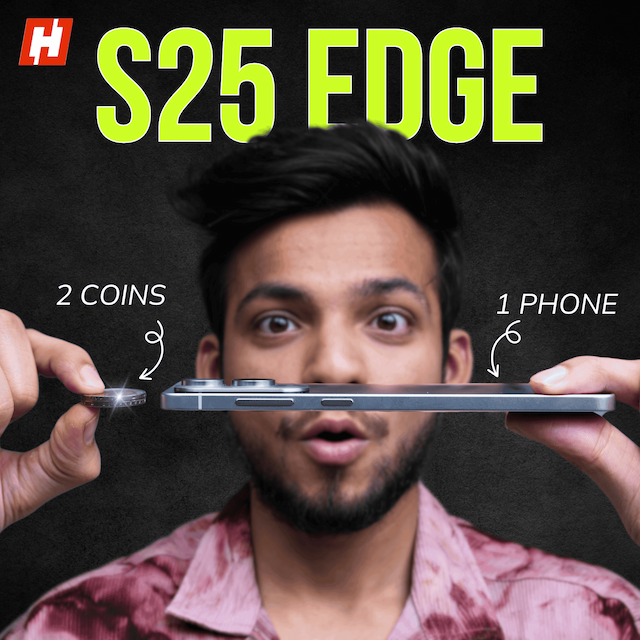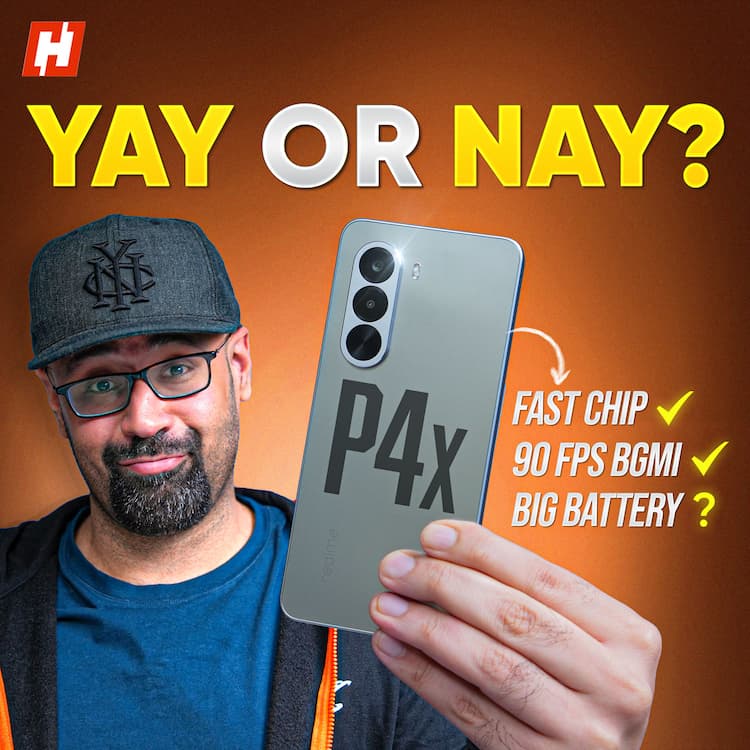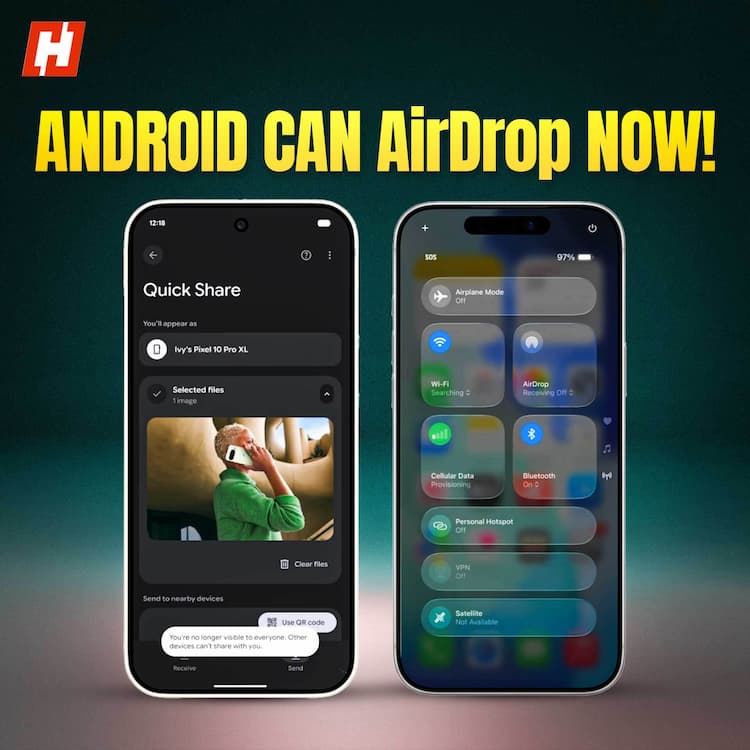Samsung Galaxy S25 Edge First Impressions: Style meets performance—but at what cost?

Samsung’s new Galaxy S25 Edge is here, and it’s officially the slimmest flagship phone the company has ever made. After using it for 48 hours, I’ve come away both impressed and a little puzzled. Samsung has made a few surprising choices with this one—some expected, some not so much.
Let’s break it down.
Samsung Galaxy S25 Edge Design
First up, the design. The S25 Edge is just 5.8mm thick, and nothing else in the current market comes close to that level of slimness. It’s also extremely light at only 163 grams.
The in-hand feel is fantastic—compact, featherlight, and premium. Samsung’s titanium frame makes a return here, just like we saw on the S25 Ultra, giving the phone a much-needed sense of durability.
On the front, there’s a new layer of Gorilla Glass Ceramic 2, which Samsung claims is tougher and more drop-resistant than anything they’ve used before. While I haven’t run it through a full set of our durability tests yet, I can confidently say the build quality feels excellent. The camera bump does stick out a fair bit, which is understandable for a device this thin.
Still, the overall look is very clean, minimal, and understated. I do wish Samsung had taken a few more risks with the colour options—they’re a little too subtle for my taste. Despite its ultra-slim profile, the S25 Edge doesn’t compromise on premium features. You still get IP68 water and dust resistance, wireless charging with support for Qi2, and even reverse wireless charging. There’s also support for magnetic accessories if you want to snap on a case or charger, which adds a nice layer of convenience.
Samsung Galaxy S25 Edge Display
The display on the Galaxy S25 Edge is another strong point. It’s a 6.7-inch panel with beautiful, uniform bezels all around, and it supports a variable refresh rate ranging from 1Hz to 120Hz. The QHD+ resolution keeps everything looking sharp and crisp, whether you’re scrolling, gaming, or watching videos.
What I really appreciate is that it’s a flat display. Personally, I’ve always preferred flat screens over curved ones—they’re more practical, easier to protect, and generally less prone to accidental touches.
That said, the name “Edge” does feel a little misleading here. Given Samsung’s legacy with the Edge series, I was expecting a return to those signature curved displays. Instead, we get completely flat sides and a flat screen. It’s a bit ironic, really—a phone called “Edge” that has flat sides.
Samsung Galaxy S25 Edge Cameras
One of the trade-offs with the Galaxy S25 Edge is in the camera department. Unlike its Ultra sibling, this one skips the dedicated telephoto lens. Instead, you get a 12MP ultrawide camera alongside the same massive 200MP main sensor that’s featured on the S25 Ultra.
That main sensor is no slouch—it’s incredibly capable and can easily handle most zoom requirements through digital cropping. While it doesn’t quite replace a true optical telephoto, the image quality still holds up surprisingly well in most situations.
On the front, Samsung has stuck with its tried-and-tested 12MP selfie camera. It’s nothing new, but it continues to deliver consistent results and does the job just fine.
Samsung Galaxy S25 Edge Performance
Spec-wise, the Galaxy S25 Edge doesn’t feel like a watered-down flagship in any way. It’s powered by the Snapdragon 8 Galaxy Elite for Galaxy edition, paired with 12GB of RAM and up to 512GB of storage. That’s as premium as it gets.
What’s even more impressive is that Samsung has somehow managed to fit a vapour chamber cooling system into this incredibly slim chassis. Despite its thin profile, the phone doesn’t show any signs of thermal issues or performance dips.
In my early testing, it’s held up really well. Whether I was gaming, multitasking, or editing photos, the S25 Edge handled everything without breaking a sweat. So far, it feels every bit like a proper flagship—just one that’s slimmer and lighter than anything else out there.
Samsung Galaxy S25 Edge Battery
Of course, packing all that power into such a slim body comes at a cost—and the biggest compromise is clearly the battery. The Galaxy S25 Edge only has a 3900mAh battery, making it one of the smallest batteries in any recent non-foldable Samsung flagship.
To make things worse, charging speeds are capped at 25W. And in 2025, that feels pretty slow, especially when plenty of phones now charge in under 30 minutes. Personally, I think Samsung could’ve ditched wireless charging to make room for a larger battery. Even dropping the screen resolution to Full HD might’ve helped with power efficiency.
Yes, software and chip-level optimisation can go a long way in improving battery life—but let’s be honest, nothing beats the peace of mind that comes with a bigger battery. And while it’s holding up fine for now, I’m really curious to see how this smaller battery performs after three or six months of daily use.
Samsung Galaxy S25 Edge First Impressions
The final sticking point is the price. The Galaxy S25 Edge starts at ₹1,10,000, slotting itself right between the S25+ and the Ultra. And that makes its positioning feel a little strange. You’re paying a premium for the slim design and performance, but also accepting a few compromises along the way.
Samsung’s pitch for the S25 Edge is pretty straightforward—an ultra-slim phone with flagship-level specs, aimed at users who want style without sacrificing power. And in some ways, it’s a smart move. There’s definitely a niche for a device like this.
But whether the trade-offs—like the smaller battery and lack of a telephoto camera—are really worth the high asking price, that’s something we’ll only know after spending more time with it.
Trending in Tech

Realme P4x Performance test — Can it handle everything?

Is the OnePlus 15R the mid-range phone to beat in 2026?

Realme GT 8 Pro Dream Edition ASMR Unboxing & Review: Racing style meets Snapdragon muscle

